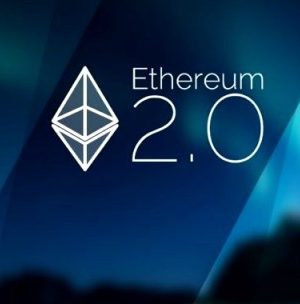Over the last two years, the ETH 2.0 update was the main conversation point in crypto. People are excited and somewhat anxious to watch drastic network changes. Most importantly, validators want to prepare for the full release of ETH 2.0 and make the most out of the update.
If you want to support the network after the release, what steps can you take to maximize rewards? What can go wrong in becoming a validator? What are the ways to start staking Ethereum? We are answering these and other questions in this post.
When Is ETH 2.0 Coming?
There’s a roadmap with estimated deadlines on the Ethereum official website – it states that, by the end of the year, the beacon chain will merge with the mainnet. In 2022, the development team is planning to deploy sharding.
Of course, this is not a definite timeline. The development team pushed the timeline before (the Beacon Chain was supposed to go live in 2019 but was really launched in December 2020).
Assuming that deploying two remaining phases will take 1-2 more years than stated is not presumptuous – either way, by 2024-2025 the shift to ETH will probably be complete.
Joining ETH2.0: How to prepare?
One of the biggest changes to the ecosystem is the shift to staking. At the time of writing, over $13 billion in ETH are already staked. If you want to jump on the bandwagon, here’s how to go about it:
Step #1. Examine the pros and cons of staking
To make an informed decision on whether you should stake ETH, not blindly follow the hype, take the time to examine the pros and cons of PoS. We summarized them in the table below.
| PoS Pros | PoS Cons |
| Low incentive for security attacks (since 51% token holders has no incentive to jeopardize Ethereum considering they’d have to deposit over $6 billion in tokens and become major stakeholders). | Penalties – for going offline, validators lose returns in a quadratic leak. For violations like double voting, penalties can reach up to 16 ETH. Validators who have less than 16 ETH will be ejected from the blockchain. |
| Advocates for decentralization: validators don’t need extra hardware or cheap electricity to join the network. | Ethereum lockup – at the moment, validators can’t move ETH2 back to the PoW chain or withdraw their stake. Withdrawals will be enabled only in the 1.5 Phase of the update. |
| Staking rewards: for running a validator 24/7, ETH holders can expect rewards ranging from 2% to 22% depending on the amount of stake. | Missing out on other opportunities. If you commit to staking Ethereum, there’s no turning back. While ETH2 staking gives investors stable rewards, backing a growing altcoin can result in higher (up to 100x) returns. Before choosing staking, you need to consider the opportunity cost. |
Step #2. Decide how much ETH you plan to stake
As you figure out how much Ethereum you should stake, here are the considerations to keep in mind:
- While you can stake more than 32ETH, the extra amount will not get staking rewards.
- You cannot become a solo validator unless you stake 32 ETH.
- The tokens you stake will be inaccessible for an undefined period of time – it’s better to stake the amount of ETH you will not need in the nearest future.
For extra help on deciding on the amount of your stake, use a staking calculator.
Step #3. Choose between running your own validator and joining a third-party staking pool
There are two ways to join ETH2 – run validator software on your own or rely on third-party infrastructure on Redot or Kraken. Here are the benefits and drawbacks of each option.
| Benefits | Drawbacks | |
| Solo validator |
|
|
| Staking pool |
|
|
Final Thoughts
While the ETH2.0 update is fundamental, end-users who want to trade ETH will not be heavily impacted.
On the other hand, if you want to stake Ethereum, a few considerations come into play.
To make sure you are confident in your decision, choose a staking amount based on your risk tolerance and take your time to determine whether you want to become a solo validator or join a staking pool.
Before you join the network, you can watch transactions on the blockchain and keep track of top validators using an Eth2 explorer. These platforms give crypto enthusiasts a big-picture view of the network, as well as data on validator income and penalties.
Based on blockchain explorer insights, you can make a fully informed decision about joining ETH2.0.
Follow Techiemag for more!
Table of Contents




![[Jan 2024] EZTV Proxy | Unblock EZTV | EZTV Alternatives eztv](https://www.techiemag.net/wp-content/uploads/2020/05/eztv-300x194.png)


